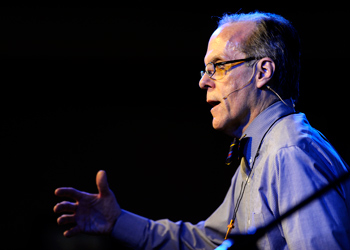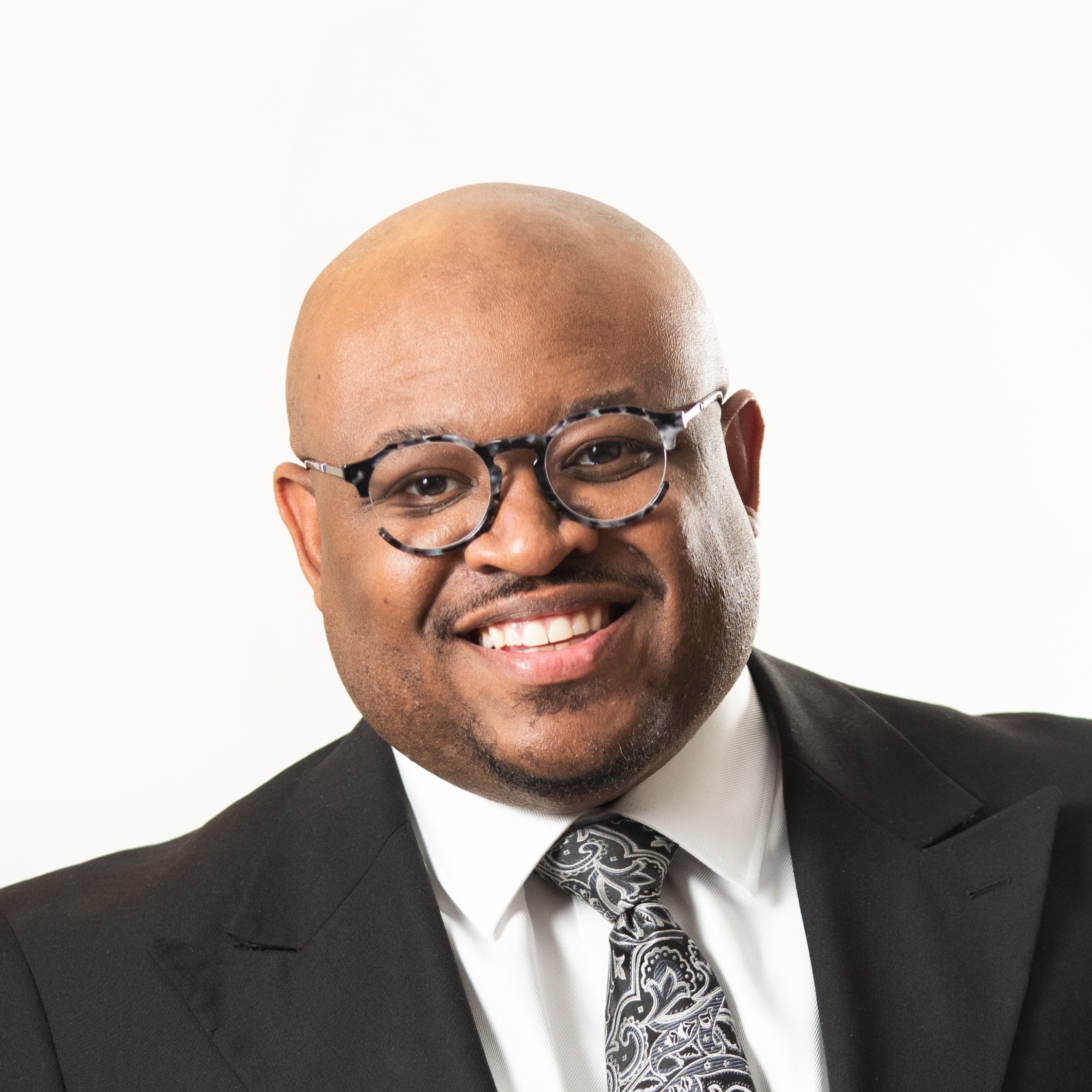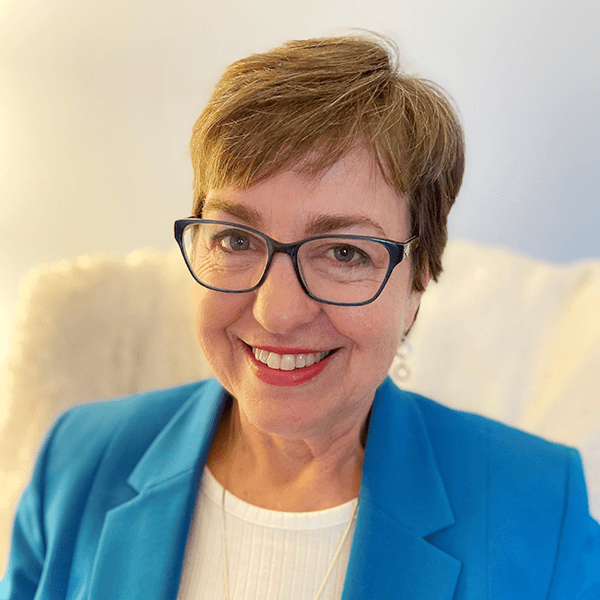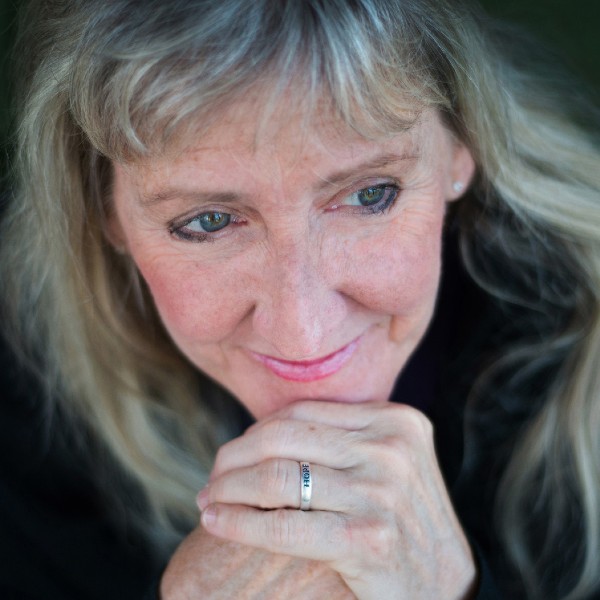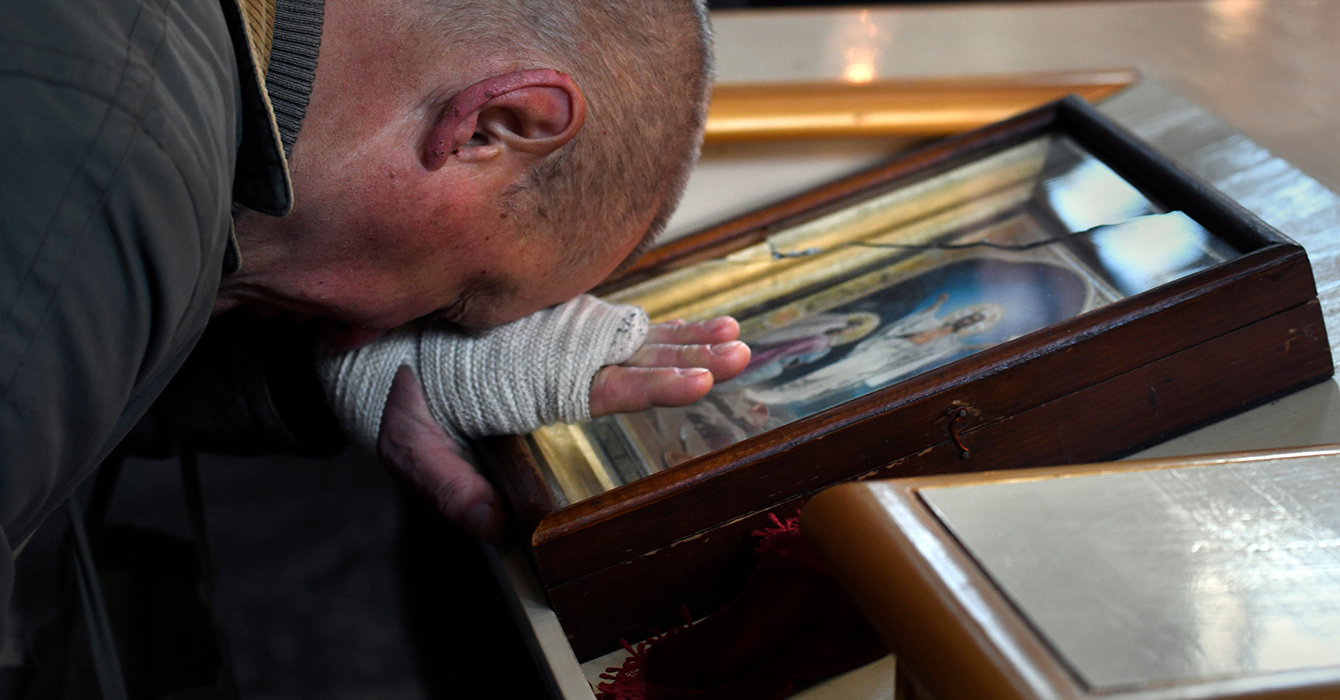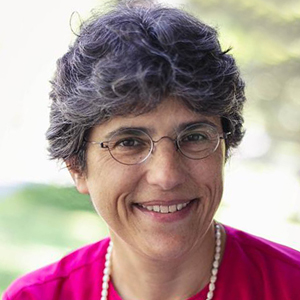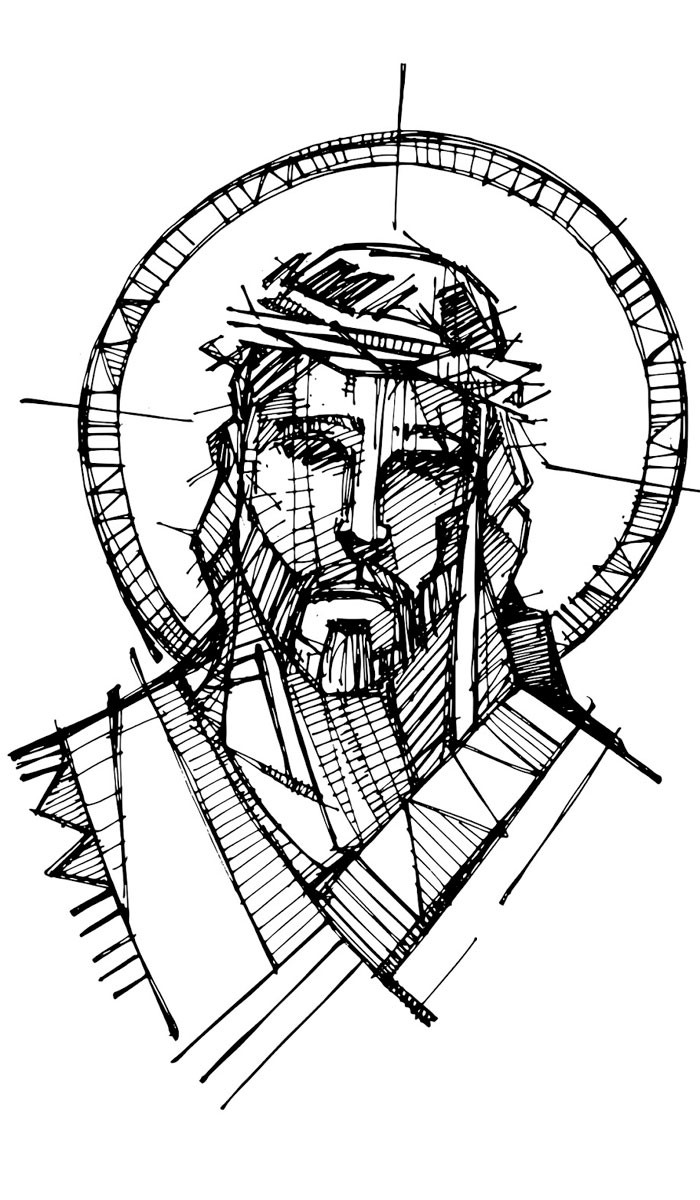Update: The Rev. Dr. Jim Harnish retired from Hyde Park UMC in 2014.
The call came from the bishop on the Rev. Dr. Jim Harnish’s 45th birthday.
“Can you come by the office tonight?” the bishop asked.
Harnish, pastor of St. Luke’s United Methodist Church in Orlando, knew an urgent summons from the bishop was serious. He suspected that he and his wife, Marsha, would be asked to relocate.
The prospect of leaving the vital, healthy church he had helped birth 13 years earlier wasn’t a happy one. Exciting things were happening there.
When they met that March evening in 1992, the bishop told Harnish that Hyde Park United Methodist Church in Tampa, founded at the turn of the century, was in need of a new pastor. Unlike Harnish’s bustling suburban church, this one was near the city’s urban core.
Harnish’s mind raced: Why leave for a church with half the budget, half the attendance and half the staff?
“Are you asking me or telling me?” he finally said. The bishop assured Harnish it was his choice, but Harnish had to decide overnight.
There was no time for reconnaissance. Harnish turned to prayer.
The answer would be yes. As painful as it was to say goodbye to the congregation where he and his wife had raised their two daughters, Harnish felt he needed to obey God’s call.
“I really had no idea what we were getting into,” he said. “And if I had, I might have turned it down.”
The challenges would be daunting. The frustrations would test his patience. But in the end, Harnish found a place to hone and develop his leadership skills, and members got the guidance they needed to grow in Christ and discover their own gifts.
And a once-thriving church that had become “spiritually shallow and inwardly focused” was reborn as a missional church, serving its community and beyond.
Neither Harnish nor his new congregation knew it at the time, but Hyde Park UMC would experience resurrection -- new life in ways that neither could imagine. But first, both Harnish and the church would have to face death.
Sputtering and stalling
Today, the signs of new life at Hyde Park United Methodist are everywhere. Spread over four city blocks, the church is a model of urban vitality.
Five Sunday services, ranging from traditional to a come-as-you-are worship in a former bar, have a combined average weekly attendance of about 1,100 and an annual operating budget of $2.8 million. They expect 3,000 people to attend Easter Sunday services.
Members take part in dozens of ministries and lay-led missions, such as trips to Cuba, South Africa and Nicaragua and a homeless outreach on the property every Sunday. Children’s programs stretch from cradle to teen. There’s a diverse membership representing all ages, races and incomes.
It was very different 20 years ago.
“We were a pretty typical Methodist church,” said longtime member Celia Ferman. “Everybody looked like everybody else, and we weren’t growing. We knew something had to change, but didn’t know how to make that happen.”
Harnish’s arrival was met with great anticipation. But soon, he said, he made his own discovery: this congregation had a “very clear sense of its past, was somewhat foggy about its present, and didn’t have a clue about its future.”
Attendance hadn’t changed much in two decades, and the facilities were run-down and depressing. While the church was financially sound, there was no systematic process for giving. Harnish couldn’t even get an updated membership roll or mailing list.
But the most important “to do” on Harnish’s list was getting the congregation to define a vision and mission. He charged a leadership task force with establishing a long-term plan and challenged them to find ways to reach people outside the church.
Questions to consider
Questions to consider:
- How would your constituents describe your institution? Would they use words like “welcoming and warm” or “spiritually shallow and inwardly focused”? How has that culture developed in your setting?
- When have you faced moments of decision about the nature of your institution?
- How does your institution recognize and celebrate its resurrection moments?
- What do you most hope your legacy will be when you leave your current leadership role?
As discussions progressed, he learned something about Hyde Park United Methodist that made him seriously doubt his decision to be its pastor.
Many of the church’s decision makers were fundamentalists who held conservative views on the inspiration of Scripture and the nature of salvation. Some said they no longer wanted to be part of the denomination. Harnish pleaded with them to make Hyde Park more inclusive and to welcome other viewpoints, within reason. There’s room for all of us at the table, he said.
Karen Crawford was in the camp that liked Harnish’s message. She and her husband had enjoyed many of the people and the Sunday school classes at Hyde Park, but she admits that the congregation had two glaring problems.
“Spiritually shallow and inwardly focused,” she said. “It was more of a social event to go to church.”
The choice
A year after his appointment, Harnish faced something he had never experienced before. For the first time in his 20 years of pastoral ministry, he did not feel confident that the Staff-Parish Relations Committee would ask the bishop to reappoint him.
So Harnish made the move that would change his and the church’s future.
He felt he had to be true to his own convictions, to follow the Methodist tenets of being biblically rooted, open-minded and service-oriented. He was committed to focusing on the life, words, way and spirit of a loving Jesus. He believed in teamwork and consensus.
He could not change now, even if it meant losing his job.
“If God is calling Hyde Park to be a fundamentalist congregation, you need to be the best one you can be. But I am not the man to lead you,” he told the committee. “If you want to be spiritually alive, warmhearted and a Christ-centered congregation that lives out the center of the Methodist tradition, I’ll give you my life to do that. But you will have to choose.”
In the end, he got seven votes in favor of his reappointment and two against. Some of his well-heeled detractors showed their displeasure by leaving the church and taking their tithes with them. In one year, Hyde Park lost $60,000 in pledges.
But what it gained was an identity and a long-term plan to build upon. It could begin living up to its motto, “Making God’s Love Real.”
Even though he believed that the conversation about the church’s direction was long overdue, Harnish had wrenching moments of self-doubt. In the end, he trusted that God was in control, and that something new and exciting would be created.
“There were days I thought, ‘Wow, this is hard.’ The stress was taking a toll on my own health. I wondered if I was going to die and kill the church at the same time,” he said. “But I’m a rather tenacious person. I had to depend on my instincts that this church needed someone to take hold of the tiller and ride it through.”
Even some of his supporters felt uneasy.
“Absolutely, it was painful,” member Bruce Tigert said, explaining that the people who had first welcomed Harnish “felt betrayed. Some of them were second- and third-generation members.”
What Harnish brought to the table, Tigert said, was the notion of possibilities. Of what members could personally do and where the church could go.
“Before, the attitude was, ‘This is our church, and if you believe the way we do, you can join us.’ Now it’s a church that says, ‘If you want to grow in your faith, come join us. There’s room for different opinions.’ Jim showed us a whole new approach that I had never heard before.”
That attitude and how it would play out would take Hyde Park out of the doldrums and transform it into a thriving urban faith community. What it lost in support from departing members it regained with its welcoming invitation to be part of its vision. Conflict that dominated the discussion in the first two years, Harnish said, “simply went away” as members adopted a sense of common direction.
As attendance and participation blossomed, Harnish was able to tackle that “to do” list.
In a 10-year period, the church embarked on a FutureFaith campaign, raising $11 million to purchase new buildings and renovate existing facilities, with projects including a major overhaul and expansion of the main sanctuary.
Jim Ferman, Celia’s husband, said Harnish was successful in turning the church around in part because he had the attributes of a “successful CEO,” such as vision, team-building skills and persistence.
The external changes were obvious. But it was the internal ones that helped fuel growth.
“The minute I walked in the door, I felt comfortable. Members greeted me like a friend,” said Stephanie Nichols, who first visited Hyde Park in 2007 with her twin infants and husband after moving from Oklahoma. “That dedication to being welcoming is not just talk. It’s in the culture there.
“This is truly an equipping church, in every sense of the word.”
That, Harnish said, is why Hyde Park is succeeding where some other mainline churches are not. Many people envision church life as faithfully coming to worship, giving financial support and serving on committees. But they never envision themselves in ministry to other people in the name of Christ.
“My role isn’t to tell people where they need to go and how to get there,” he said. “We developed the church’s mission by consensus. And my job is to keep those goals in focus and the momentum moving forward.”
Failures, successes and challenges
Hyde Park has endured some misses and backfires. One of its biggest was the Friday night Connection service in the activities center. The church invested about $100,000, buying high-top tables and crates of candles to create a casual meeting place for 20-somethings.
“We had more candles than people,” Harnish said. “We ended up completely missing the target.”
But risking failure goes along with giving more power to the people in the pews. “We believe in grace around here,” he said. “We can fail and be forgiven.”
One of its best success stories is its Open Arms ministry, a Sunday morning outreach to homeless people that began with a handful of volunteers.
Unlike most churches, Hyde Park invites people to its campus, feeding them a hearty breakfast on tables dressed with white linen, giving out clothing, offering counseling and haircuts, and providing a short optional prayer service with live music. Homeless people also have access to the restrooms and can use the church as a mailing address.
The ministry opens its doors at 8 a.m. -- about the time members start arriving for services. It’s a mix of humanity, with well-dressed members emerging from SUVs and late-model cars exchanging parking-lot greetings with men and women in castoff clothing carrying their possessions in garbage bags.
Harnish admits that the on-site ministry on the church’s busiest morning “stretched the comfort level” of some of the members, but overall, it has evolved into one of Hyde Park’s best outreach efforts. Earlier this month, dozens of volunteers served nearly 250 people on a chilly morning.
Though Hyde Park is thriving, it is not immune to challenges.
In early February, Harnish and church members were horrified when maintenance employee Michael Klevene was arrested for multiple counts of possession and distribution of child pornography.
Federal authorities determined that Klevene, who had worked at Hyde Park for 20 years, did not use a church computer to collect or send images of children.
Harnish quickly assembled his crisis team, including member Darren Richards, a vice president at a local public relations firm. Harnish addressed the arrest on a local television report and from the pulpit the Sunday after the arrest, following up with an email to each congregant.
“They appreciated that honesty, and they were assured that nobody had ever been in danger or compromised on church property,” Richards said.
Still, it was a shocking experience, something that Harnish still struggles with. How could he work alongside someone all those years and have no idea of his double life? Did he miss something he should have seen? And though his responsibility is to the congregation, how does he maintain his principles of Christian love and forgiveness to a troubled soul?
“We know we had the right protection policies in place. We know we were transparent in handling the whole situation,” Harnish said. “But we’re humans living in an imperfect world. Things happen that don’t always make sense.”
Leaving a legacy
Now 66, Harnish has been talking about retirement for the last few years. His twin brother, Jack, the senior pastor at First United Methodist Church of Birmingham, Mich., is also planning to take that step soon.
When the day comes -- “in one to three years” -- he will have more time to devote to his grandchildren and to spend on his writing, teaching, prayer life and speaking engagements.
And he will continue to tell Hyde Park’s resurrection story and how it can be achieved elsewhere through a series he developed with commissioned deacon Justin LaRosa, the congregation’s director of discipleship ministries. “A Disciple’s Path: Deepening Your Relationship with Christ and the Church,” which includes a leader’s guide, a workbook and a companion reader, has now been purchased by 3,300 churches around the country.
“We’ve been so humbled by the response,” LaRosa said. “It has shown us how hungry people are to take that next meaningful step to transform their hearts and their lives. We’ve seen it work in amazing ways here, and we wanted to share that process.”
This spring, Hyde Park’s future will expand to include the now-closed First United Methodist in downtown Tampa. After a long and painful process, the historic church surrendered last year to dwindling membership and finances. A lay team of volunteers led by LaRosa is now developing a purpose and strategy for a downtown ministry for the former sanctuary and offices.
The idea, he says, is to reach out to people living and working downtown through small groups and events, and to create a pastoral presence. A midweek service is also possible.
In true Hyde Park style, “we are working on the vision first,” LaRosa said. “Once we establish that, we’ll know the direction this will go.”
Although it will be difficult to say goodbye to their longtime leader when the moment comes, church members say what Harnish did best is show them that the church is a collection of voices, not a singular force.
“He was just what we needed at that time,” Karen Crawford said. “And when his time comes to leave, we will know that a system is in place here that will keep our mission alive. That will be his legacy.”
That’s what Harnish wants to hear. Despite the difficulties and mistakes, when he sees members taking what’s in their hearts and offering it to the world, he can’t help but smile.
This is what faith looks like, Harnish says.
“Hyde Park and I have been very good for each other,” he says. “It’s been an incredible journey for both sides.”

